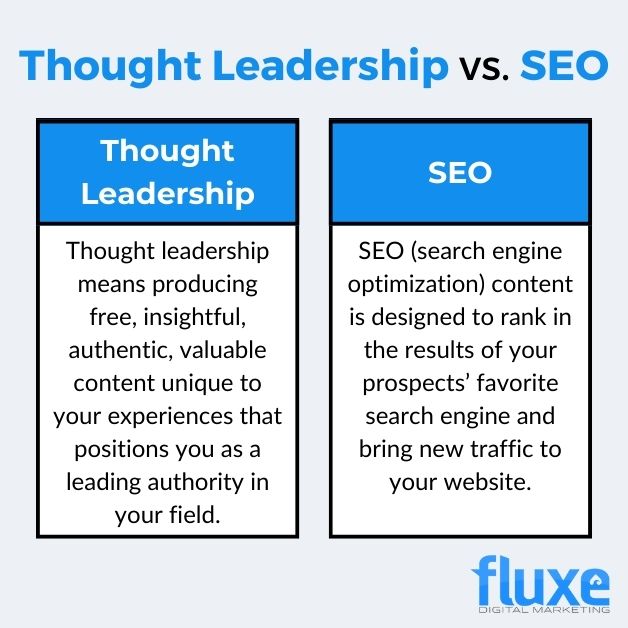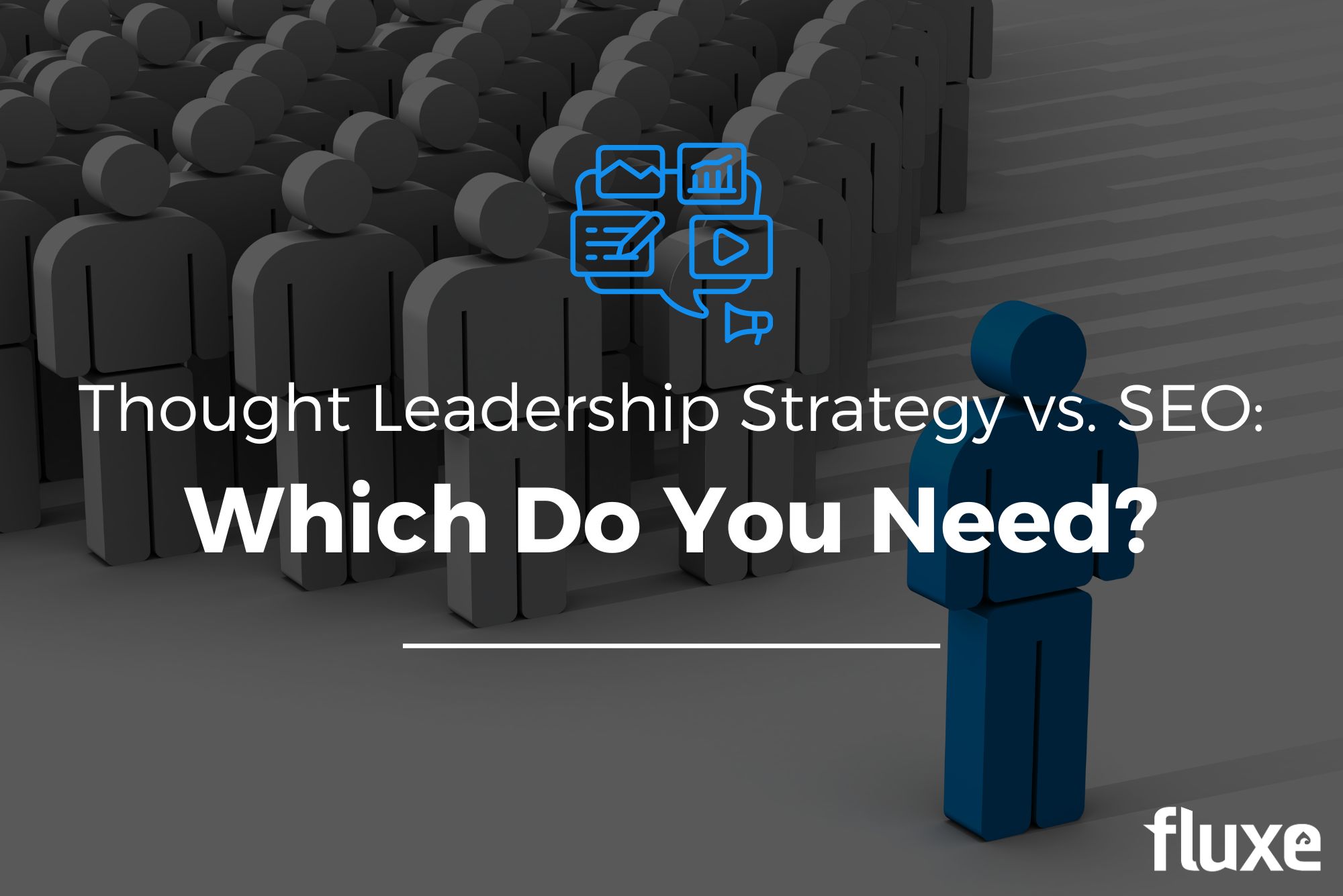You’ve decided it’s time to start content marketing.
Those prospects aren’t going to find themselves, so you sit down, crack open your laptop, and prepare to crank out some content.
But wait — do you just… start writing? What should you talk about? Your company? The industry? Should you do a little keyword research first? Who’s your audience?
Do you have a content marketing strategy?
I’ve watched many a business owner fall into the trap of skipping content marketing strategy and jumping straight into content creation. Without strategy, you end up creating content that doesn’t serve a purpose or achieve a result. It’s a lot of effort to put into shooting in the dark.
Content marketing strategy helps you determine what kind of content to create and how you can use it to fill gaps in your sales process and achieve your business goals. In order for your content to be effective, the what needs to come from the why, not the other way around.
Strategy is a trade-off game, balancing types of content with your desired outcomes. Knowing the downsides of each content type will help you strike the right balance.
For my clients, I’ve seen two different content marketing strategies work well: thought leadership strategy and SEO.
Thought Leadership Strategy and Its Benefits
The content marketing field is saturated with the term thought leadership — it’s used to refer to so many things that, frankly, few people seem to understand what it actually is.
Ultimately, thought leadership isn’t a type of content so much as an approach to content.
Thought leadership means producing free, insightful, authentic, valuable content unique to your experiences that positions you as a leading authority in your field. It allows you to define how customers and competitors alike see you — as an expert among experts, the top source to turn to for industry-leading wisdom.
With thought leadership strategy, SEO isn’t a big consideration. In fact, you won’t be able to find keywords for most thought leadership pieces because the concepts are outside the usual bounds of thought by definition. These are new ideas, and people aren’t searching for them yet. If no one is searching for it, there won’t be any keywords available to target in the post.
SEO Content and Its Benefits
SEO (search engine optimization) content is designed to rank in the results of your prospects’ favorite search engine (yeah, it’s Google) and bring new traffic to your website. It revolves around optimizing posts for a specific keyword — a phrase your target audience types into Google’s search bar when they’re looking for information.
Developing effective SEO content starts with finding that keyword through keyword research. There’s a wealth of data available on the keywords people search for, and a great content marketing agency can help you sift through that data. Ideas for SEO-driven articles are dictated by what prospects are searching for rather than by an innovative or incisive opinion of the CEO.
SEO content is much easier to create, as you can use specialized AI writers such as SE Ranking, which covers the entire content creation process – from creating an outline based on competitor data from the SERP to generating optimized content and further performance tracking.
The more keyword-first content you publish, the faster your site will move up the search engine results pages (SERPs). SEO isn’t an overnight game, and it takes three to six months to see results. That may seem like a long time, but if you’re publishing fewer optimized blog posts, it’ll take much longer.

It All Comes Down to Your Goals
So, which content marketing strategy do you choose? It all comes down to your company’s needs and goals.
If your goal is to flood your website with targeted, relevant traffic, then SEO should make up the majority of your content. If you want to establish yourself as a progressive thinker in your industry, thought leadership is the way to go.
A thought leadership strategy will be more effective if you have either an existing social media following or you’re willing to invest in growing your audience. Since no one will find your content via search engines, you need to get eyeballs on it another way.
An important note on choosing a strategy: Don’t let your ego get in the way of your results.
Publishing cutting-edge ideas can feel good, but if it doesn’t line up with your business goals, you’re probably better off creating keyword-first content and growing your business. Later, when you’ve built a large enough audience, you can revisit whether thought leadership content makes sense.
Meet Other Needs With Other Content Types
SEO and thought leadership strategy aren’t the end-all-be-all of content marketing, especially if you have different, more specific business needs. Consider these other types:
Sales enablement content. If you’ve got a sticking point in your sales process where you need to share info with your prospects to grease the wheels of a conversion, you’ll need sales enablement content. This type of content addresses prospects’ concerns and questions, and converts them into buyers.
Customer education content. If you find that your customers are being difficult after the sale because they don’t quite understand the work you do, you’ll need customer education content, also referred to as customer training content. This content helps buyers better understand what you do and see the value in your product or service.
Thought Leadership Strategy vs. SEO: Final Thoughts
The kind of content marketing that’s best for your business is the one that fills the most urgent need. Once that need is filled, you can cross over into other content types.
If you’re losing hard-earned prospects in the sales process, sales enablement content will help, but will slow down lead generation from the SERPs. If your customer experience is subpar and you’re worried about churn, focus on customer education. If your sales pipeline is running dry and you’re struggling to fill it, go hard on SEO.
If you choose to start with the latter, remember that SEO is a long game. As long as you’re publishing at least some keyword-first content each month, you’ll slowly start ranking for keywords. Then, once you’ve dealt with your customer education/sales enablement, you can focus on thought leadership strategy bombs that’ll shake up your industry and help establish you as a leader.



